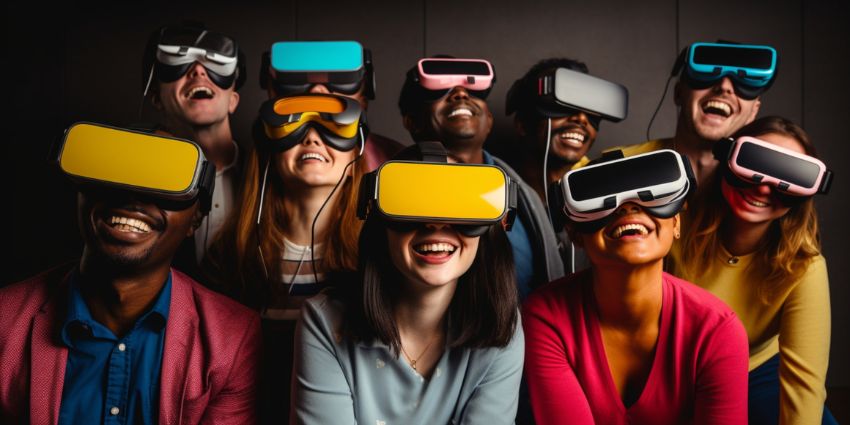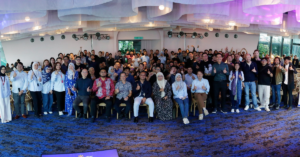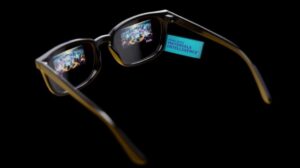6 Spatial Computing Trends to Watch in 2024

Spatial computing trends, and the trends influencing both the extended reality landscape and metaverse ecosystems are closely connected. While spatial computing isn’t an entirely new concept, major market leaders like Apple believe it will shape the future of our digital interactions.
Offering a way to blend computing systems with the physical world in a more natural, interactive way, spatial computing could impact virtually every industry. We’re already seeing aspects of spatial computing emerge in everything from collaborative platforms like Microsoft Teams to smartphones.
With a projected value of $544.6 billion by 2032, it’s safe to say the spatial computing industry is growing. The question is, which trends will influence the solutions of the future?
1. Advancements in Hardware and Wearables
Spatial computing solutions rely on a combination of intuitive hardware and powerful software. One of the major spatial computing trends we’ll see in the years ahead revolves around developing more advanced hardware. This includes the development of more comfortable, lightweight, and powerful wearable headsets, like the impeding Apple Vision Pro.
Products like the Vision Pro combine virtual and mixed reality experiences in a single, adjustable headset to give users new ways of interacting with digital content. It’s not just wearable hardware that’s evolving, either. Increased interest in spatial computing is leading to the development of more advanced sensors for hand/eye tracking and IoT connectivity.
Plus, we’re seeing a rise in the development of XR-focused chips designed to power spatial computing systems. Even the cameras and processors in these innovative tools are becoming smaller and more powerful.
2. Spatial Computing Trends: Dedicated Software and Tools
Just as vendors are producing more advanced hardware for the spatial computing landscape, the software used to power these systems is evolving, too. When announcing its new Vision Pro spatial computing device, Apple also introduced “visionOS.” According to the company, this is the first dedicated spatial operating system introduced to the XR market.
Apple has since embedded aspects of spatial computing software into its iOS ecosystem, too. However, it’s not the only company experimenting in this area. Rokid recently launched a dedicated AR studio spatial computing platform. This allows users to create more advanced spatial experiences for the augmented reality landscape, with hand gesture recognition and spatial audio.
Foremost cloud leaders like AWS and Microsoft offer access to spatial computing solutions, such as Amazon Sumerian, for 3D scene creation. There’s also Azure’s Mixed Reality service kit, which provides tools for remote rendering, advanced spatial mapping, and object anchoring.
3. Evolving Interaction Options
One of the core benefits of spatial computing is that it allows users to interact with computer systems and content more naturally. To do this, the ecosystem uses sensors to track movement in various ways. We’ve already seen the impact of evolving hand and eye-tracking tools in the market.
These solutions can support everything from hands-free interaction with content to foveated rendering. However, as technology evolves, spatial computing trends pave the way for even more advanced tracking capabilities.
For instance, Ultraleap’s innovations in the hand-tracking world allow the software to monitor everything from your knuckles to your fingertips. Meta is in the process of developing full-body tracking software for its Quest devices and future metaverse strategies. Companies like Unity also create tools to make eye and gaze tracking more accurate.
4. Spatial Computing Trends: Connectivity
When examining spatial computing trends, it’s worth remembering that it isn’t a single technology. It’s a term that refers to a wide range of solutions that improve our interactions and experiences with machines. Many of these solutions, from AI to XR software, require significant computing power.
To minimize lag and ensure the accessibility of spatial experiences, companies are investing in more advanced connectivity options. For instance, NVIDIA’s CloudXR 4.0 platform enables developers to create comprehensive cloud platforms with 5G mobile compute edge connectivity.
XR Cloud streaming solutions and access to 5G connectivity will enable companies to create and use more powerful spatial computing experiences with less expense. This could pave the way for more companies of all sizes to adopt the technology in the years ahead.
5. Increased Adoption and New Use Cases
Like many XR concepts, spatial computing was initially seen primarily as a solution for the entertainment and gaming landscape. However, as companies continue to invest in immersive technologies for collaboration, creativity, and productivity, that’s beginning to change.
Apps designed to create spatial workspaces for remote and hybrid teams are becoming more advanced. Spatial computing technologies are also becoming an essential component of the industrial metaverse and manufacturing industries.
In these landscapes, spatial computing tools can give employees real-time guidance on the field, helping them to rapidly repair products and machines through AR content mapped to specific components. The same tools can help power immersive product development through digital twins and IoT. There are even companies using spatial computing to assist with boosting the success rate of surgeries in the medical space.
6. Evolving Opportunities for Immersion
While there’s more to spatial computing than virtual reality, many technologies focus on immersing users within a specific experience or situation. As a result, some of the top spatial computing trends are linked to the rise of immersive solutions.
For instance, spatial audio is becoming more common in the modern landscape. Companies like Apple are infusing spatial audio into their devices. Microsoft even creates spatial audio solutions for advanced meetings on Microsoft Teams.
Another immersive technology relevant to the world of spatial computing is haptic wearables. Haptic gloves, body suits, and similar tools simulate the feeling of actually touching a digital object. Although these solutions have seen limited adoption in recent years, that could change as new vendors enter the market with more affordable options.
The Latest Spatial Computing Trends
With major technology giants now going all-in on spatial computing, the market is set to experience significant growth. In the years ahead, vendors will continue to discover new ways of combining intuitive hardware and powerful software to change how we interact with machines.
These tools could pave the way for the future experiences we have not just in the metaverse but in the workplace, too.
Source link
#Spatial #Computing #Trends #Watch





